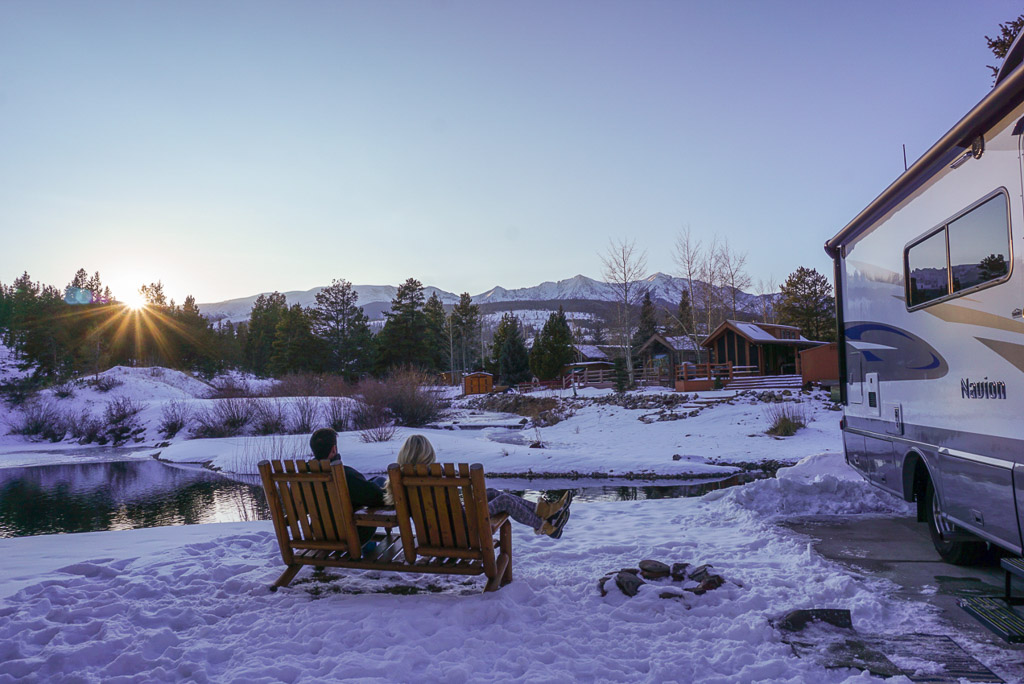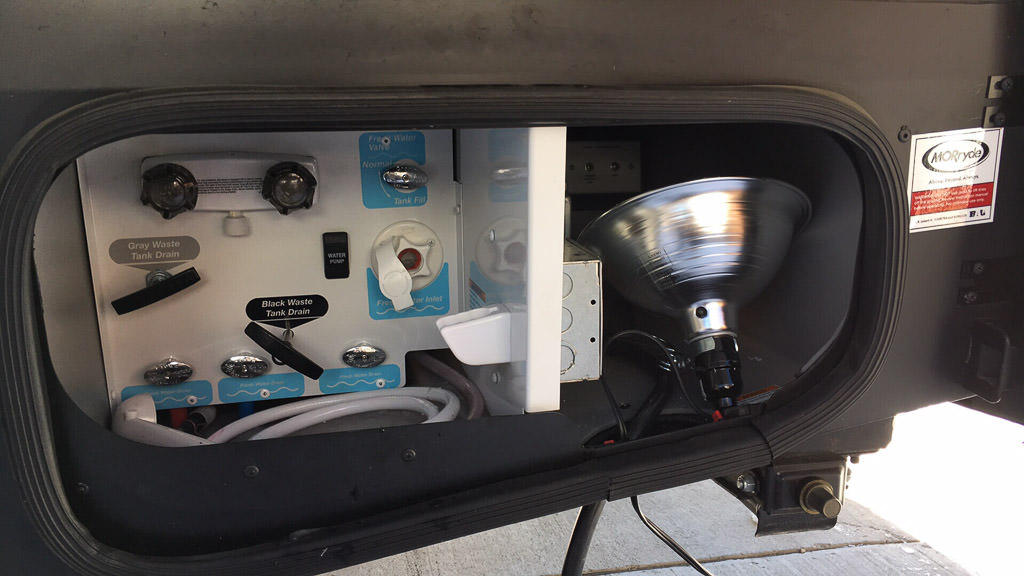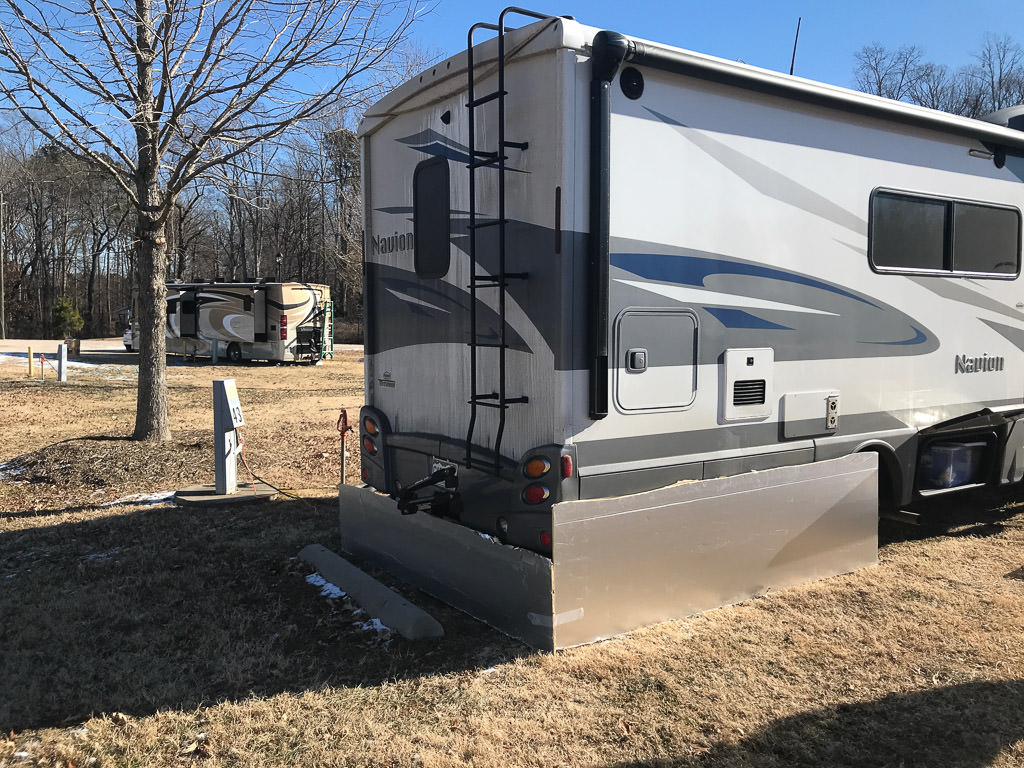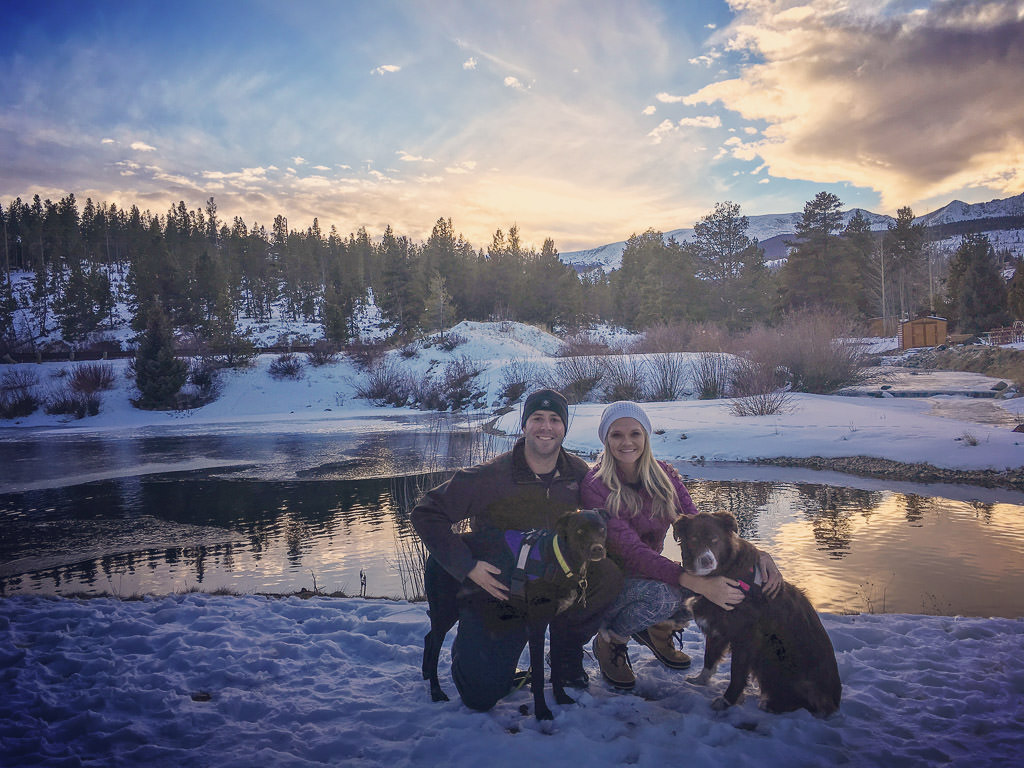
What NOT to Do When Winter RVing
Winter camping can be just as fun, but also presents unique challenges that you don't have to deal with during the summer. We recently took our first winter camping trip to Breckenridge, CO, and discovered we weren't ready for all those challenges. We had a great time, but we ran into our fair share of RV issues that made the experience, shall we say, even more memorable.
Over the last six weeks, we have spent nearly every night in the RV with freezing temperatures, and in that time, we've learned the ins-and-outs of cold weather camping the hard way. Since no one told us what to do, we're going to tell you what NOT to do. We hope this will help you to avoid some of the mistakes we made!

DON'T leave your regular fresh water hose connected.
To seasoned RVers, this is probably the most obvious (and avoidable) mistake you can make - but we made it nonetheless. We showed up and saw other people hooked up so we assumed that we could hook up too. In the morning, we woke up to a frozen hose! That's not the way you want to start your day!
Solution: Use a heated hose or rely on your freshwater tank.
If you want to hook up to a water supply while camping in freezing temperatures, you'll need a heated fresh water hose to prevent the water in the hose from freezing. You may also need to protect or insulate the box/pipe at the water's source. This likely will depend on how common freezing temperatures are at the park you're staying in. Campgrounds and RV parks located in destinations where freezing temperatures are common, will likely have found a way to mitigate the risk of freezing pipes.
Another option is to simply fill your fresh water tank and rely on that to provide water during your stay. This is what we've decided to do during our winter adventures. Since our water tank is located in the slide, as long as the RV is heated, the water in the tank will not freeze.
DON'T assume that your water lines won't freeze if the RV is being heated.
When we purchased our RV, we specifically discussed winter camping since we're from Colorado. The dealer assured us that we would have nothing to worry about because the plumbing is inside the coach. We were told that as long as the coach is heated, the water lines will not freeze. So, it was a rude 3:00 am awakening in Breckenridge when Dan went to use the restroom and discovered we had frozen water lines. What we found out in the morning was that the dealer forgot to mention the exposed water lines that run behind the un-insulated water tank fill-up compartment. In extremely cold temperatures, this exposed portion of the lines can freeze even when the RV is heated.

Solution: Put a heat lamp in the water compartment.
After doing some research, we found a great solution to prevent the exposed water lines in the fill-up compartment from freezing. Putting a 150W heat lamp in the water compartment will provide enough heat to keep it from freezing, without melting any of the plastic in the enclosed compartment. On really cold nights, we turn that lamp on and let it run through the night. Since setting up the heat lamp, we haven't had a single issue with our water lines freezing.
DON'T underestimate the power of a hair dryer.
If you experience freezing of any kind, hopefully just thawing out will resolve your problem. But, a heat gun is a great tool to quickly unthaw freezes in small areas. We didn't have a heat gun, but we did have a hair dryer. Ten to fifteen minutes of concentrated heat on the pipes and we were back in business! Depending on your rig's height, outdoor propane heaters can also be great to thaw out larger areas (especially for trailers that have water lines running under the subfloor).
DON'T forget that waste tanks can freeze too.
Through a real "crappy" situation, we learned that tank heaters are not always enough. Although they did a great job of keeping the actual tanks from freezing, the pipe extending from the tank, although very short, along with the valves, can easily freeze. To remedy this, we purchased a few boards of insulation and skirted just the back end of our RV. We placed a heater inside the insulated enclosure to thaw out the valves and keep them from freezing up again so we could dump.

DON'T forget to read your manual.
This was one thing we actually did right. In reading our Navion's manual, we discovered that the water heater is only rated to operate down to -4 degrees. This required us to drain/winterize the water heater on extra cold nights. We also learned that you should turn the water heater off while driving, which meant we also had to drain the water heater before we hit the road on travel days with below freezing temperatures.
DON'T let the cold winter temperatures keep you from RVing.
We've enjoyed less crowded RV parks and campgrounds, being parked near ski slopes and sledding hills, and snuggling up inside our cozy home on wheels to stay warm at night.

And now you know what NOT to do to ensure you're prepared for freezing temperatures in your RV. Stay warm out there...we're headed to Florida now!
Comments
Comments on this post are moderated, so they will not appear instantly. All relevant questions and helpful notes are welcome! If you have a service inquiry or question related to your RV, please reach out to the customer care team directly using the phone numbers or contact form on this page .